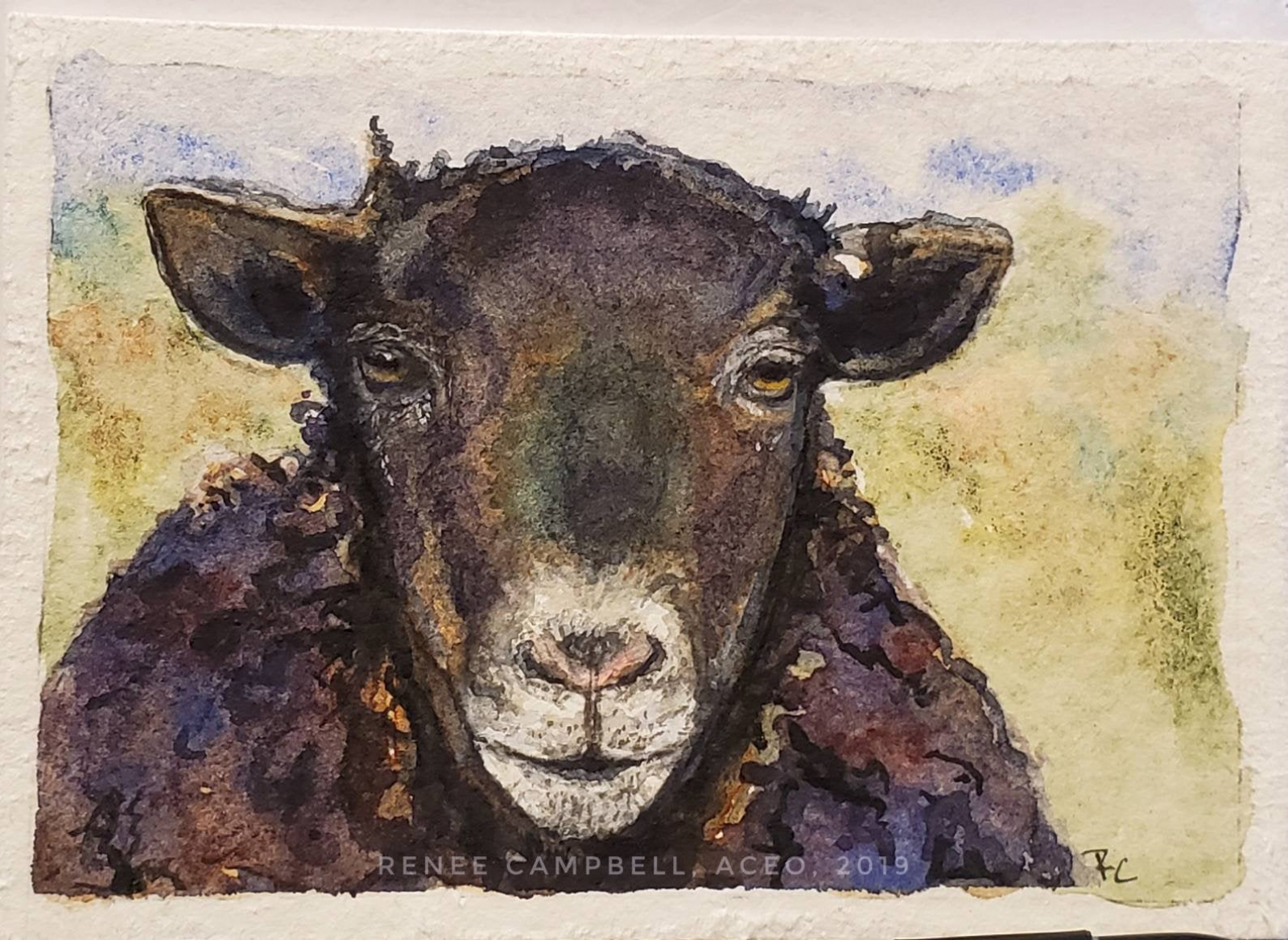

If you breathe it in it chokes you and it looks like water. Hirst has explained that he is attracted to formaldehyde ‘because it is dangerous and it burns your skin. The sculpture is spatially contained.’ (Quoted in Button, p.114.) The white frames that surround the formaldehyde tanks are particularly dominating visually because of their width, and now function as something of an artist’s logo. Hirst has commented that the vitrines, ‘first came from a fear of everything in life being so fragile’ and wanting ‘to make a sculpture where the fragility was encased.
#Dark sheep head art professional#
Placing objects in solution in tanks, Hirst follows the precedent of American Pop artist Jeff Koons (born 1955), whose Total Equilibrium Tanks created in 1985 fetishised professional baseballs and art objects at the same time by suspending the balls in solution in glass vitrines on black steel stands (see T06991). The heavy industrial aesthetic of the Hirst’s tanks and vitrines references the sculptural forms of such American Minimalists as Donald Judd (1928–94) and Carl André (born 1935). Hirst has frequently cited Bacon as an early influence (Hirst and Burn, pp.68–9), making a sculptural homage to Bacon’s many triptychs of his lover George Dyer in a work entitled The Tranquillity of Solitude (For George Dyer) 2006, in which skinned sheeps’ carcasses take the place of Dyer, sitting on a toilet or leaning over a basin, each individually immersed in a formaldehyde-filled vitrine. Bacon saw and praised A Thousand Years not long before he died in 1992. Like A Thousand Years, many of Hirst’s Natural History works – most notably those in which animals are skinned or sliced – combine the pure clean lines of classic Minimalist sculpture, with the uncomfortably eviscerated flesh of a portrait by the painter Francis Bacon (1909–92).

The heavy frames of Hirst’s tanks have been a signature structure since he created his first steel-framed vitrine in 1990, A Thousand Years 1990 (reproduced Hirst pp.28–33), in which a pair of interlinked glass cells hosts a colony of flies living in a rotting cow’s head and dying on an Insect-O-Cutor. This was his first use of bissected animals he created Away from the Flock Divided (private collection, New York) in 1995. In 1993 he created Mother and Child Divided ( T12751), using the carcasses of cow and a calf, sliced in half and mounted in four separate tanks. Out of Mind (reproduced Stuart Morgan, Damien Hirst: No Sense of Absolute Corruption, exhibition catalogue, Gagosian Gallery, New York 1996, p.37), two individually encased skinned cows’ heads.

He also made his first works with ungulate carcasses in liquid: Stimulants (and the way they affect the mind and body) (reproduced Damien Hirst, p.125), consisting of two cuboid tanks each containing a skinned sheep’s head and Out of Sight. In the same year the artist filled two sets of shelves with fish in solution in individual Perspex boxes and titled the two separate works Isolated Elements Swimming in the Same Direction for the Purpose of Understanding followed by the bracketed words ‘left’ and ‘right’ indicating the ways the fish are heading (reproduced Damien Hirst, pp.114–15). The sheep in versions two and three are more similar in appearance and in pose ARTIST ROOM’s sheep has less black on its head and a pinker tinge in the rest of its wool than the others.Īway from the Flock is one of a group of sculptures collectively entitled Natural History, that Hirst initiated in 1991 with what was to become one of his most famous works, a tiger shark floating in a giant formaldehyde-filled tank, entitled The Physical Impossibility of Death in the Mind of Somebody Living (reproduced Damien Hirst, pp.120–1). The principal difference between the three versions (reproduced together Hirst and Burn, pp.84–5) is that the sheep in the first version has an entirely black head and its forelegs are raised further off the floor of the tank, so that it appears to be arrested mid-jump. Away from the Flock is unusual for a Hirst sculpture in that it exists in three versions, all created the same year, of which ARTIST ROOM’s is the third. Thick white frames surround and support the tank, setting in brilliant relief the transparent turquoise of the solution in which the sheep is immersed. Away from the Flock is a floor-based sculpture consisting of a glass-walled tank filled with formaldehyde solution in which a dead sheep is fixed so that it appears to be alive and caught in movement.


 0 kommentar(er)
0 kommentar(er)
